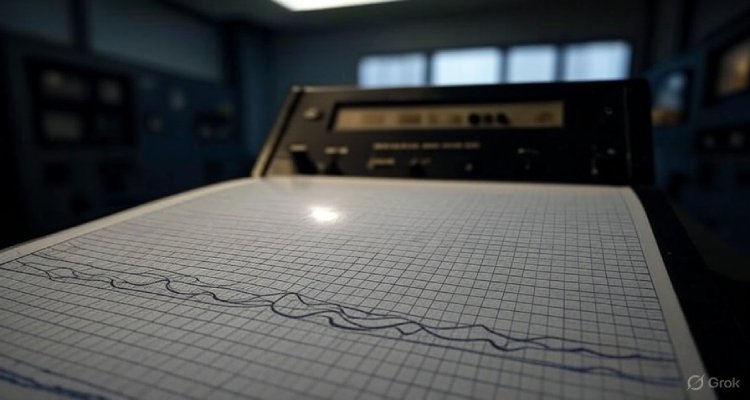Earth’s Pulse: The Silent Science Beneath Our Feet
Beneath our feet, the Earth pulses with silent signals. Discover the seismic science shaping our planet’s heartbeat and why decoding it matters more than ever.
Introduction: Listening to a Silent Symphony
Every second, Earth speaks — not in words, but in waves. Beneath our feet, an invisible rhythm pulses through the crust, a low-frequency song of seismic signals, magnetic shifts, and thermal movements. Scientists call it “Earth’s hum,” a persistent, nearly imperceptible vibration that hints at the planet’s inner workings. It’s not only a scientific curiosity but a frontier for breakthroughs in disaster prediction, resource exploration, and climate monitoring.
Context & Background: A Planet in Motion
The idea that Earth constantly moves isn’t new. From ancient myths about a living Earth to modern seismology, humanity has long tried to understand the planet’s subterranean secrets. Yet only in recent decades — with the rise of advanced geophysics, satellite imaging, and AI modeling — have we begun decoding the “silent science” below.
Seismologists have discovered that even in the absence of earthquakes, Earth emits continuous micro-vibrations. These tiny tremors — caused by ocean waves, atmospheric pressure changes, and tectonic plate shifts — carry a wealth of information about the planet’s structure and health. These signals are akin to a stethoscope for geologists, allowing them to monitor the planet’s inner life without a single drill.
Main Developments: Reading the Earth’s Inner Signals
Recent studies from institutions like the U.S. Geological Survey (USGS) and European Space Agency (ESA) have elevated Earth monitoring into a precision science. AI-driven seismic networks can now track shifts in tectonic pressure months in advance. Satellite thermal scans spot magma movements that precede volcanic eruptions. Deep Earth tomography, akin to a CT scan for the planet, maps subterranean rivers and fault lines with startling clarity.
One pivotal advancement comes from the International Seismological Centre’s efforts to create a global seismic fingerprint database. This “pulse archive” is helping scientists identify early signs of potential megaquakes and volcanic eruptions — offering crucial minutes, even hours, of warning.
Another breakthrough: passive seismic imaging. Unlike traditional seismic surveys that use man-made explosions, this technique harnesses Earth’s ambient vibrations to map underground features. It’s not only safer and cheaper but more environmentally friendly, revolutionizing how we explore oil, gas, and geothermal reserves.
Expert Insight: What Scientists Are Saying
Dr. Kate Morrison, a geophysicist at Caltech, explains:
“What we’re learning is that the Earth is never truly still. These micro-vibrations give us real-time feedback from deep within the crust. With new tools, we’re turning noise into knowledge.”
Meanwhile, geotechnical engineer Dr. Rajiv Patil emphasizes the predictive power:
“By analyzing Earth’s pulse, we’re getting better at forecasting landslides, identifying sinkhole risks, and understanding how human activity like mining or groundwater extraction affects stability.”
Public perception is also evolving. Awareness campaigns and educational tools are helping communities near fault lines and volcanoes appreciate the role of seismic science in safety and preparedness.
Impact & Implications: Shaping the Future Below Ground
The implications are vast. In earthquake-prone regions like California, Japan, and Turkey, integrating Earth pulse monitoring into early-warning systems could save countless lives. In the Arctic, subtle ground vibrations are helping detect permafrost melt — a crucial climate change indicator.
Economically, the technology is transforming industries. Energy companies use passive seismic data to pinpoint drilling sites with minimal environmental disruption. City planners in megacities like Tokyo and Istanbul are using underground imaging to fortify infrastructure.
But there’s also an ethical layer. As governments and corporations gain deeper access to Earth’s subsurface data, questions arise about surveillance, indigenous land rights, and resource ownership. Balancing innovation with respect for local communities and ecosystems is essential.
Conclusion: From Silence Comes Insight
Earth’s silent science is anything but quiet in its implications. What was once the domain of obscure research is now vital to public safety, environmental stewardship, and sustainable development. As technology amplifies our ability to hear the planet’s hidden heartbeat, we’re entering a new era — one where listening carefully to the ground beneath us may be the key to thriving on its surface.
Disclaimer:
This article is for informational purposes only and does not constitute professional geological advice. Always consult local authorities and geophysical experts for earthquake or disaster planning.











